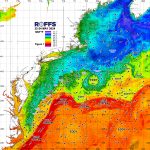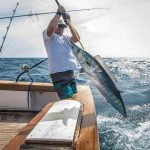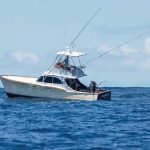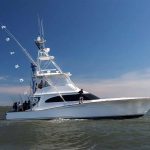ROFFS™ Fishy Times Newsletter – 58th Edition – New Videos, Atlantic Canyon Runners & Update to NOAA Recreational Fisheries Policy for 2015
NEWS
Updated Videos on ROFFS™.com – Be Sure to Check Out the “Hot News” Button on the ROFFS™ Homepage

Above: A boat named the Maggie Mae is seen hung up on a snow bank at the intersection of Lincoln and Summer Streets as the vessel was getting towed on a trailer through downtown Boston on Wednesday, February 11, 2015. Video Courtesy: Boston Herald staff video by Christopher Evans
Please click HERE to watch the video on our website now!

Above: Rogue waves are randomly occurring gigantic waves in the the middle of the ocean. Video Courtesy: Paul Csige |YouTube
Please click HERE to watch the video on our website now!

Above: RRV in the North Sea caught in tail end of Hurricane Gonzalo. Video Courtesy: Bigwavemaster1 | YouTube
Please click HERE to watch the video on our website now!

Above: Rescues Come in Many Ways…Video courtesy: helloU | Facebook
Please click HERE to watch the video on our website now!
Atlantic Canyon Runners: An Inside Look at Fishing Offshore Canyons in the Northeast
Article by: Capt. Vincent Daniello | Sportfishing Magazine – March 2015
The sort of fishing and adventure that awaits out here just can’t be equaled near the coast, yet the canyons are surprisingly accessible. About a fifth of the U.S. population lives within a few hour drive of a port offering canyon charter trips. Boats cruising 25 knots cover the 50- to 150-mile ride out with time for a day of trolling, a night of chunking, and another half-day trolling before heading home.
For an inside look at this unique offshore fishery, I interviewed six pro captains operating from Maryland north through New Jersey and east to Long Island and Cape Cod.
“You have no idea what you’re going to get into,” says Ricky Wheeler, a freelance captain out of Pleasantville, New Jersey. “You might hook a 1,000?pound blue marlin, get double-digit shots at white marlin, or get covered up with dolphin and wahoo while fishing near floating debris. You’ll catch bigeye and yellowfin tuna trolling during the day. At night, you’ll get shots at swordfish and mako, along with more tuna.”

Above: Above: When a big blue shows, it pays to have big teasers and big lures in the spread. Have at least one 80W ready to go.
Please click here to read more on canyon fishing in the northeast on our website now!
NOAA Fisheries National Saltwater Recreational Fisheries Policy 2015
Courtesy: asafishing.org
Saltwater recreational fishing is a traditional American pastime integral to social, cultural, and economic life in coastal communities across the nation. This time-honored activity allows millions access to America’s great outdoors each year, while generating billions of dollars in economic activity.
Traditionally shaped by commercial forces, demographic, market, and ecological shifts are changing the nature of U.S. fisheries. Our nation’s expansive coastal and ocean resources face increasing pressure as coastal populations grow, and more people pursue recreational opportunities in ecologically important marine and estuarine areas.
Beginning with its roots as the Commission of Fish and Fisheries in 1871, NOAA’s National Marine Fisheries Service (NMFS) has played a continuous leadership role in science-based stewardship of our nation’s living marine resources. NMFS is responsible for maintaining healthy marine and coastal ecosystems capable of supporting sustainable and productive fishery resources for the longterm use and benefit of the nation.
In so doing, NMFS recognizes the substantial benefits to the nation associated with saltwater recreational fishing and is committed to pursuing a collaborative stewardship approach promoting safe public access to fishery resources, fishery sustainability, and regulatory accountability suited to the unique nature of recreational fisheries. To this point, NMFS recognizes the inherent differences between recreational and commercial fisheries and the need for stewardship approaches able to best accommodate each while achieving fishery conservation and management goals.

Studies: BP spill reduced Gulf life
Article By: Harvey Rice – www.houstonchronicle.com – February 16, 2015
Oil from the Deepwater Horizon blowout in 2010 may have created a vast zone on the Gulf of Mexico floor where marine life is much sparser than before toxic petroleum settled there, according to studies presented Monday at a Houston conference on the BP oil spill.
Mate said he suspects the problem has to do with the food chain at the bottom of the Gulf, where there are no longer organisms to support the squid that are sperm whales’ main food source.
Mate said the zone could become a serious problem for marine life if it fails to heal. “My sense is that we’ve got a little bit of a tiger by the tail,” he said. “I think we need to be concerned about how long this lasts.”
The study was one of several presented by scientists at the 2015 Gulf of Mexico Oilspill and Ecosystem Science Conference. The conference at the Westin Galleria Hotel is scheduled to end Thursday.
The spill, the largest in U.S. history, dumped 4.1 million barrels into the Gulf of Mexico, much of it broken up by chemical dispersants that caused the oil to spread in vast underwater plumes and sink to the bottom.

Above: image courtesy of ecowatch.com.
If you do not want to wait for our next Fishy Times newsletter, please visit us in the meantime to get all your fishing news on Facebook, Twitter, YouTube and on the web. Safe and successful fishing until next time! As always, please send comments & feedback on Fishy Times newsletter content directly to us at feedback@roffs.com.






